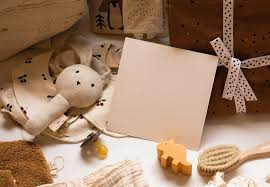After a long, cold winter, parents often can’t wait for spring to arrive. What’s not to love? The weather is starting to warm up, the kids can spend more time outdoors and you can finally shop for baby clothes in bright, cheery colors. Bring on the pastels and flower prints!
OK, so there is one thing that parents don’t love about spring: setting the clock forward for Daylight Saving Time (DST). For most people, DST simply means losing one hour of sleep. But for parents of small children, it usually means dealing with the fallout of their baby’s disrupted sleep schedule on top of losing one hour of sleep.

Source: Casezy idea/Shutterstock
To be fair, not every child is super sensitive to sleep changes. Some lucky parents have champion sleepers, which makes it easier to jump into a time change with minimal fuss. If your little one isn’t the best sleeper, or you simply want to make the time change easier on them, here are seven tips to help your little one adjust to Daylight Saving Time. We also recommend this must-have parenting book to help establish baby’s sleep routine.
- Start Preparing Early
Is your baby not the best sleeper? Help them adjust to DST by gradually moving their bedtime earlier in 10- to 15-minute increments each day. This will help their bodies slowly adjust to the time change over the course of a few days.
So, let’s say that baby’s normal bedtime is 7 p.m. Starting on day one (three days before DST), you’d try to put baby down for bed at 6:45 p.m. and wake them up 15 minutes earlier the next day. On day two, you’d put baby down for bed at 6:30 p.m. and wake them up 30 minutes earlier the next day.
Don’t forget to do the same for yourself! Try to go to bed 15 minutes earlier than normal. It will make the transition much easier!

Source: TierneyMJ/Shutterstock
- Stick to the Routine
Babies and toddlers thrive on routine. To make the time change less chaotic for them, try to stick to your baby’s normal routine as much as possible with consistent feedings, naptime and playtime. If you normally eat dinner as a family and have playtime shortly after, continue as usual (just one hour earlier). Your little one may be slightly grumpier than normal, but they’ll get back on track in no time.
- Establish a Calming Bedtime Ritual
Babies who have established good sleep habits will typically have an easier time adjusting to time changes. If your baby currently has trouble sleeping, try establishing a soothing bedtime routine for them before the time change happens. Start by giving your little one a warm bath and dressing them in cozy baby pajamas for bed. Read them a story, sing a lullaby or give them a gentle infant massage.
A consistent bedtime routine is super relaxing for your baby. But more importantly, it will help strengthen their circadian rhythm—the natural process that regulates our wake-sleep cycles.

Source: Olga Novozhilova/Shutterstock
- Control Baby’s Light Exposure
Speaking of our internal clocks, did you know that our circadian rhythms are heavily influenced by the sun’s light/dark cycles? During the day, light exposure sends signals to the body to generate alertness. Conversely, darkness can stimulate the production of melatonin (the hormone that promotes sleep).
To help reset your baby’s internal clock, take your little one outside for a mid-morning stroll every day. Open your curtains during the day and let the light shine in during playtime.
Keep in mind that you’ll have more daylight in the evenings due to the time change. Using blackout curtains in baby’s room can help make the room dark enough so baby sleeps better at night. Also, consider installing dimmable lights (excellent for winding down at night) and taping all blue and white lights from electrical sources with electrical tape.
- Get a Sleep Training Clock
Got a toddler who loves running into your room in the mornings? Do yourself a favor and pick up a sleep training clock before Daylight Saving Time. Sleep training clocks (aka, OK to wake clocks) use colors to let your little one know when it’s OK to get up and barge into your room.
On the other hand, you may not need a sleep training clock at all, particularly if your toddler is an early riser. In fact, you can take advantage of DST by getting your toddler to sleep in later so they’ll actually be waking up at a more manageable time.
- Be Patient with Your Little Ones
In the days following DST, try to be extra patient with your little ones if they throw more temper tantrums than usual. We know that this is easier said than done. After all, the time change negatively affects adults, too! But try to be understanding and positive. Time changes are confusing, especially for little kids. Even the best sleepers may be a little grumpier than usual. Remember: These are short-term changes that will go away within a few days.
- Take Care of Yourself
Daylight Saving Time is no picnic for adults, either. According to WebMD, sleep deprivation is associated with several mood issues, including anger, pessimism and stress—aka, things that aren’t useful when trying to be patient and understanding with your little ones.
To reduce the impact of DST, try to work in a cat nap while your kids are snoozing and avoid drinking caffeine too close to bedtime. Be a model for good sleep hygiene and everyone will benefit!





Be First to Comment